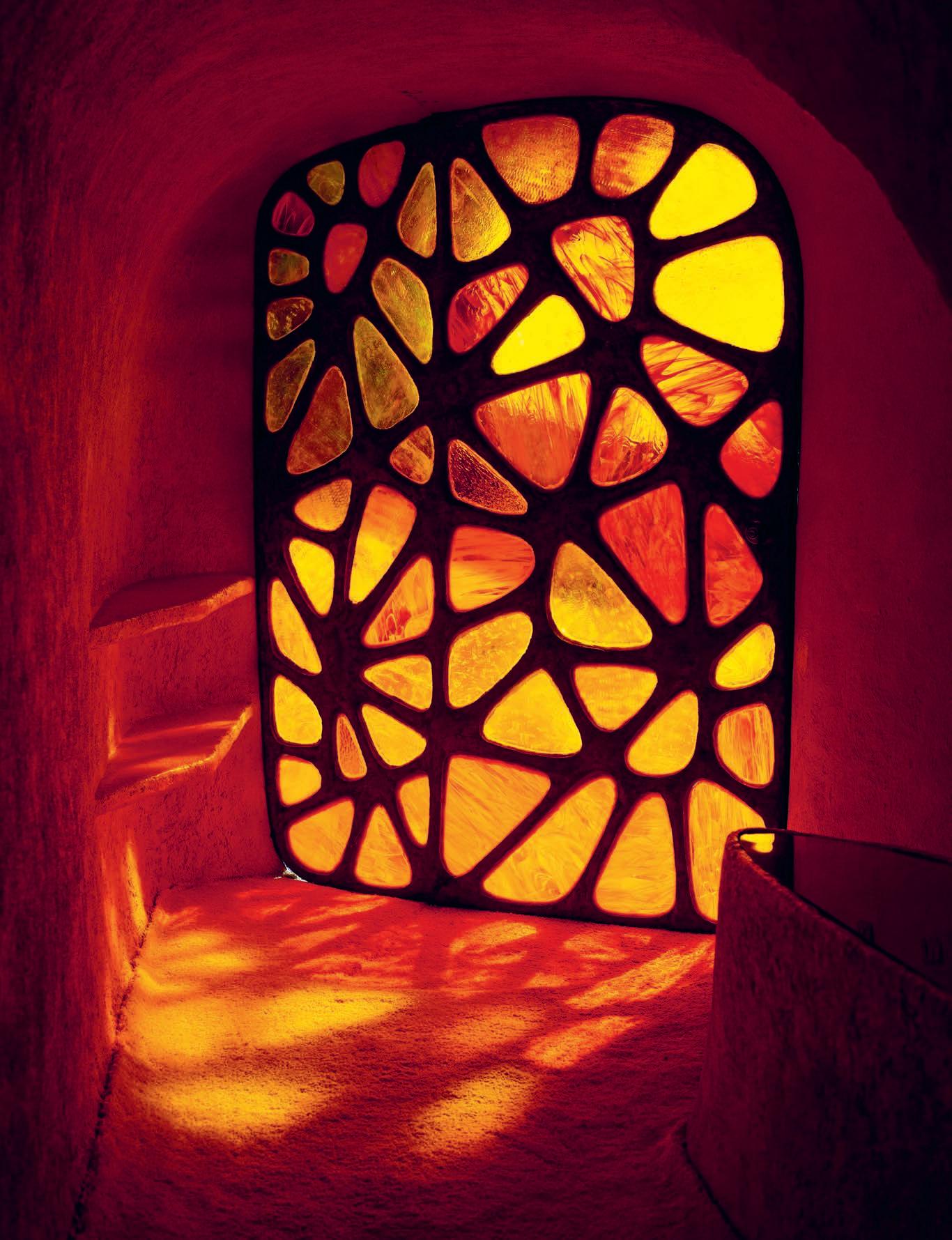
19 minute read
#BOOKTOK’S POSITIVE MENTAL ALGORITHM
ne of my absolute favourite locations to sink myself into film is the screening room at Soho House 76 Dean Street –not just for the plush seats, but because the sound system here is, quite simply, enveloping. It proved to be the perfect se ing for my second si ing of Todd Field’s Tár, which has landed Cate Blanchette armfuls of gongs for her remarkable portrayal of the despotic, fictional composer Lydia Tár. e film, scored by contemporary Icelandic composer Hildur Guðnadó ir, blends fact with fiction for its narrative and characters. Tár is in the minority: she is the first female conductor of the Berlin Philharmonic, the co-founder of an organisation supporting aspiring female conductors (tragic irony when looking at her character’s reckoning), and on the threshold of recording Gustav Mahler’s Symphony No. 5 Kind of a big deal. Yet it’s worth thinking about how Tar’s fictional accomplishments compare with real-world issues faced by so many female composers historically. For example, Mahler forced his wife, the gifted composer Alma Schindler, to choose between marrying him or
London, UK by Edith Bowman
Advertisement
continuing to compose. She spent close to a decade stifled by his oppression. Female misogyny, if that’s what one should be calling it, is also present in the film. There is nothing about Tár’s character that shouts sisterhood – quite the opposite. Of course, in the real world, the journey of female composers and conductors is one that is still on a glacially slow trajectory, something the success of this film has done well to highlight.
My second viewing of Tár led me to dive deeper into the subject. Quartet by Leah Broad is a new book that spotlights four women composers who seem to have not just been overshadowed by their male contemporaries but almost erased from the genre altogether. In 19th and 20th-century Britain it was believed to be a biological impossibility for women to navigate the creativity associated with composition. is bigoted mentation is still prevalent today. According to charitable foundation Donne, Women in Music (which is dedicated to achieving gender equality in the industry), near to nine out of 10 compositions played by orchestras in 2022 were wri en by white men.
It too highlighted my own cultural blind spots: I am ashamed I’d never heard of Doreen Carwithen, the first woman to work as a full-time film composer; or Dorothy Howell, who composed her first score aged just 13; or Dame Ethel Smyth, the first woman to have her work performed at New York’s Metropolitan Opera and the composer of suffrage anthem e March of the Women
Similarly, the visibility (or lack) of Black and Asian women composers needs underlining: take Amanda Jones, who became the first African American woman to be nominated in a score category at the Emmys in 2020. Or the Kathryn Bostic, who in 2016 became the first female African American score composer to join the Academy.
I am dedicated to finding out as much as I can about these trailblazers. e member screenings at Soho House allow me to do just that. If you’re not a Soho House cinephile already, I urge you to seek out what’s coming up. ere is still much work to be done around the awareness of all women in the entertainment industry, not least the composers in film. It was 1997 when Rachel Portman became the first woman to win an Academy Award for her score of Emma To this day, that number has only risen to three – one of those being Guðnadó ir for her work on Joker
There are so many brilliant and unique women film composers out there – a few of my favourites over the last decade include Mica Levi, Amelia Warner, Emilie Levienaise-Farrouch, Pinar Toprak and Natalie Holt. What is devastating is the lack of opportunity. Women still only make up around 7% of film composers. think we can all agree that statistic is one which should be soundtracked by the sound of no hands clapping.
Forall upcoming SohoHousescreenings, check out listings via the SH.APP. Edith Bowman is a TV and radio broadcaster and a member of Soho House 40 Greek Street
Our first-ever Latin American outpost is opening soon – we have the intel on where to eat, drink, party and immerse yourself in culture when you (inevitably) visit this summer
By Monserrat Castera
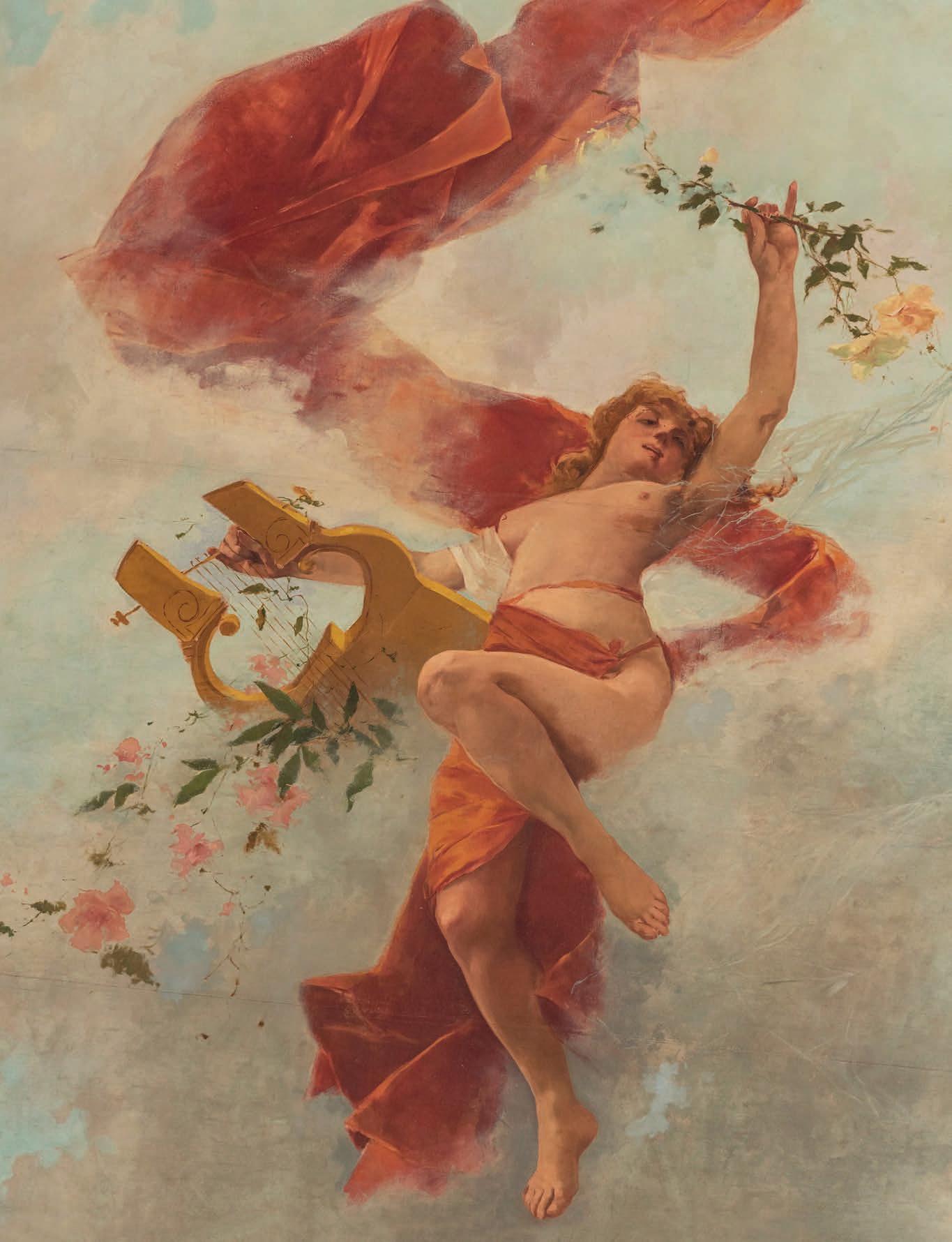
exico City has always been a centre of vast cultural richness. When the poet André Breton visited from Europe in 1938, he concluded that it was the “surrealist” place he had ever been. Today, the metropolis remains as fascinating as ever – the arrival of new museums, galleries, ateliers, clubs and many musical genres with local flavour (get some Mexican reguetón in your ears, stat) over the past few decades has transformed CDMX (Ciudad de México) into a leading cultural hub.
“Soho House has always been interested in where creative and artistic communities are changing and contributing to society. Our opening in Mexico City is a natural choice,” says Jezer Alarcón, Soho House Communications and Events Director, Latin America.
“ is is truly a step to cultivating a global creative community, ” adds Alicia Gutierrez, Soho House Director of Membership, Latin America. “ e best thing is that we will ensure that the House, at its core, embodies the beauty and creativity of Mexico and Mexican creatives.” e House is set in a restored casa in the heart of Colonia Juárez. Its design reflects the building’s historic French influences and baroque heritage, with an art collection comprising 100 works by artists born, based or trained in Mexico. You’ll also find an outdoor pool with a bright greenhouse-style bar. “It will be a great space for creatives and artists,” says Alarcón.
So, with your impending visit in mind, we’ve pulled together a foolproof guide to Mexico City for a totally beautiful and brilliantly surreal experience – using our new House as your base, claro
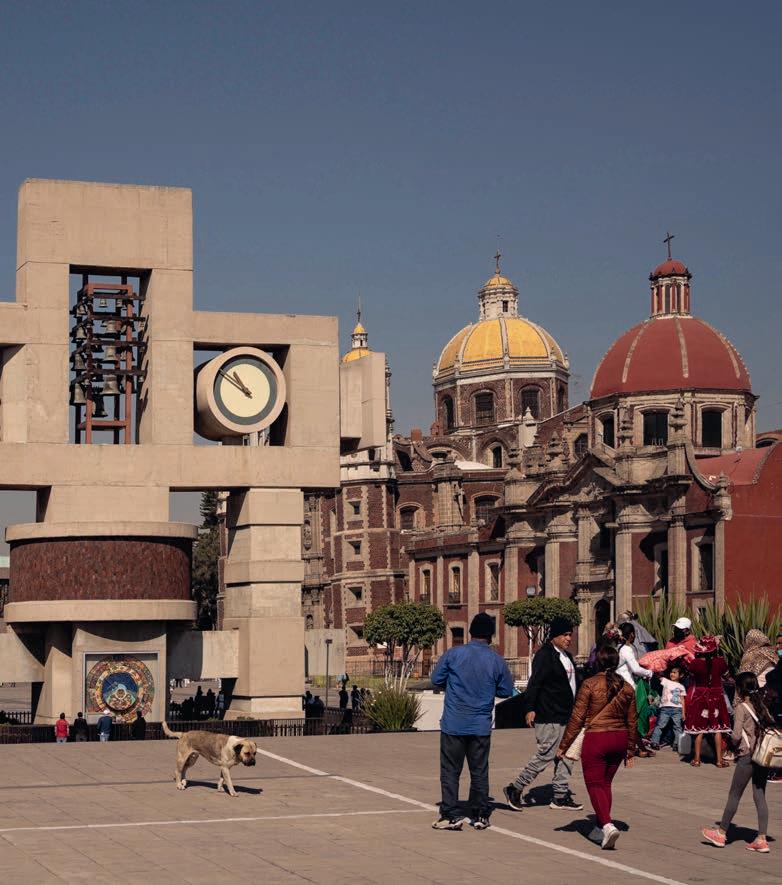
Where To Eat Tacos In Cdmx
From street food to the ho est restaurants, these are the taco spots to visit in Mexico City:

VILSITO
Petén 248 y, Av. Universidad, Narvarte Poniente, 03020
LOS TRES REYES
Pablo Veronés 12, Alfonso XIII, Álvaro Obregón, 01460
EL PARNITA Av. Yucatán 84, local “E2”, Roma Norte, Cuauhtémoc, 06700
EL PUJOL Tennyson 133, Polanco, Polanco IV Secc, Miguel Hidalgo, 11550
The Best Bars And Traditional Cantinas
PLAZA GARIBALDI
Garibaldi is known for its mariachi ensembles, norteño groups, trío románticos and folk musicians from Veracruz. e music, the tequila and the iconic maguey murals create an atmosphere of fiesta.
LA OPERA
La Opera is an authentic 19th-century Mexican cantina –so authentic that the bullet hole remains from where Pancho Villa fired his gun into the ceiling while sat in one of the booths during the Mexican Revolution in 1910. Its dishes are rooted in traditional cuisine and the decoration is both brilliantly pompous and incredibly meticulous.
LICORERÍA LIMANTOUR is is not only a cocktail bar but a meeting point for locals and tourists, rated one of the World’s 50 Best Bars in 2022. e bar collaborates with some of the most renowned mixologists from around the globe, so every night o ers a new experience.
THE AWE-INSPIRING SITES TO VISIT
TEOTIHUACÁN
Less than a two-hour drive from CDMX is Teotihuacán, where you can climb some of the most impressive pyramids in Mexico – be sure to visit nearby underground restaurant La Gruta for a sip of pulque a erwards.
CENTRO CEREMONIAL OTOMÍ is ceremonial space was built in 1988 to celebrate the Otomí culture and features vast plazas and sculptures. It’s also perfect for hiking and camping.
TLATELOLCO
Mexican folklore states that Tlatelolco was originally built to mimic a small city. is emblematic area of CDMX has stood for centuries, and is easily reached on the metro system.
TEMPLO MAYOR MUSEUM e vestiges of Mexico City’s leading archaeological treasure summon the days when the ancient gods roamed the earth – a must-see to understand Mexico’s pre-Hispanic heritage.
THE IMPORTANT PILGRIMAGE SPOTS
MONTÉ TLÁLOC is mystic mountain – a former active volcano – is the 9th tallest in Mexico. e sacred site is perfect for those seeking a complete outdoor experience, as it o ers everything from important archaeological treasures to a vast array of plant life and is the perfect place to witness beautiful sunrise views.
BASILICA OF OUR LADY OF GUADALUPE e Basilica of Our Lady of Guadalupe is one of the largest ceremonial centres in Mexico City. It is a temple built for one of the most important religious symbols of the country: the Virgin of Guadalupe. anks to its symbolic charge and its impressive architecture, this space manages to bring together both local devotees and visitors from all over the world.


THE ARCHITECTURE TO OBSERVE
CASA ESTUDIO LUIS BARRAGÁN is UNESCO World Heritage building is located in San Miguel Chapultepec. Once inhabited by Luis Barragán himself, the home is loaded with aesthetic meaning and is the perfect way to acquaint yourself with one of the most influential architects of all time.
ESPACIO ESCULTÓRICO UNAM
Surrounded by nature, sculptures created by six di erent artists seem to rise up from the volcanic rocks that dwell at the heart of the Universidad Nacional Autónoma de México. e works have been created to represent the cosmos, naturally.
CASA ORGÁNICA is dreamlike, plant-covered space created by architect Javier Senosiain harnesses the power of nature to maintain its temperature and is almost completely hidden from view – aside from the shark-like bedroom that protrudes from the top. A truly escapist experience.
Nearby Beaches To Visit
Although Mexico City is landlocked, it’s still easy to hit the beach, whether that’s the Caribbean-facing Yucatán or the wild Pacific coast:
PUERTO
ESCONDIDO, OAXACA
is string of sandy beaches is one of the best tourist spots on the Pacific coast, where you can surf, snorkel, skydive and party. It’s just over an hour from CDMX by plane, or you can travel by bus or car – you’ll just have to cross the mountains to get there.
ACAPULCO, GUERRERO
Easily the most famous stretch of coastline in Mexico, Acapulco has beaches to suit all tastes: enjoy traditional seafood, such as ceviche, sunbathe and take a dip in the cool waters of the Pacific.
RIVIERA MAYA, YUCATÁN PENINSULA
Situated along Mexico’s Caribbean coastline, the Riviera Maya is well-known for its crystal-clear waters and tropical scenery, and is just two-anda-half hours away by plane.
Pueblos M Gicos To Escape To
Translating to “magical towns”, pueblos mágicos are picturesque se lements on the outskirts of the metropolis:
MALINALCO
Around two hours from Mexico City, this traditional town has everything: churches, museums, archaeological sites, sanctuaries, temazcales and galleries. e weather is perfect and the food is amazing – a small taste of provincial Mexico.
TEPOZTLÁN
South of CDMX,in the neighbouring state of Morelos, this is the perfect getaway to party or relax. e food is excellent, the streets bloom with art and tradition and the surroundings are full of flowers and open skies.

TEPOTZOTLÁN
Under an hour’s drive from CDMX, Tepotzotlán is a place where nature and tradition meet – a nice way to get in touch with Mexican history, and the small town is full of surprises.
The Films To Watch Before You Go
ROMA e film bears the name of one of CDMX’s most iconic neighbourhoods, and deals with a historic moment in the city. It’s directed by Alfonso Cuarón and stars actor and United Nations ambassador Yalitza Aparicio. Roma also won the Oscar for Best International Feature Film.
AMORES PERROS
A small synopsis: a car accident interweaves three stories in Mexico City. at’s it.
Oscar-nominated and directed by acclaimed filmmaker Alejandro González Iñárritu, Amores Perros provides a visual tour of CDMX – the city itself acts as one of the film’s characters.
AMAR TE DUELE
Amar te Duele tells the story of Ulises and Renata: two adolescents from di erent backgrounds who fall in love in Mexico City. e soundtrack includes some of the best songs of the 2000s so, as you may imagine, it’s crammed full of tender memories.
Le e coastline at Puerto Escondido in Oaxaca.
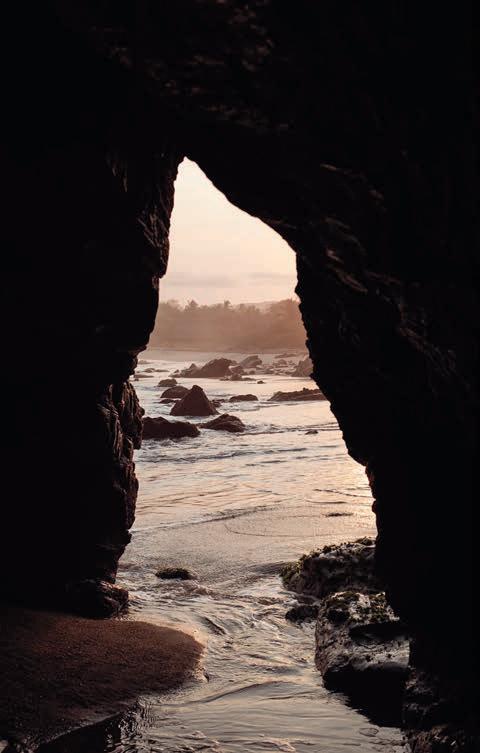
Below: e vibrant culture of CDMX; inside ceramic store Perla Valtierra. Opposite page: A glimpse of the House’s traditional exterior
THE CRAFT AND DESIGN BOUTIQUES TO KNOW
PERLA VALTIERRA
As one of the most recognised ceramists in Mexico, Valtierra perfectly combines antique techniques with modern design.

MERCADO DE ARTESANÍAS
LA CIUDADELA is traditional market in downtown CDMX o ers cra s from all over the country.

XINÚ PERFUMES e only local perfume brand in CDMX, expect to find scents laced with everything from tobacco to floral cempazúchitl
CARLA FERNÁNDEZ
Fernández is one of the country’s most renowned fashion designers. Her boutiques – co-designed by her husband, artist Pedro Reyes –are a pleasure to visit.
Explore membership at Soho House Mexico city
Driven by Dreams.
Bravely celebrating 75 years of Porsche.
e Soho Summit will take place at Soho Farmhouse from 26–28 April – a festival of ideas as inspiring as it will be a blast, not least thanks to rocket man Richard Browning (see p106). Open to all members, the event will feature a jam-packed line-up of creatives, artists, musicians, designers, actors and thought-leaders. e site will also be peppered with immersive art happenings and hands-on creative workshops. If you miss it, fear not, the Summit format will be coming to the US and EU soon.
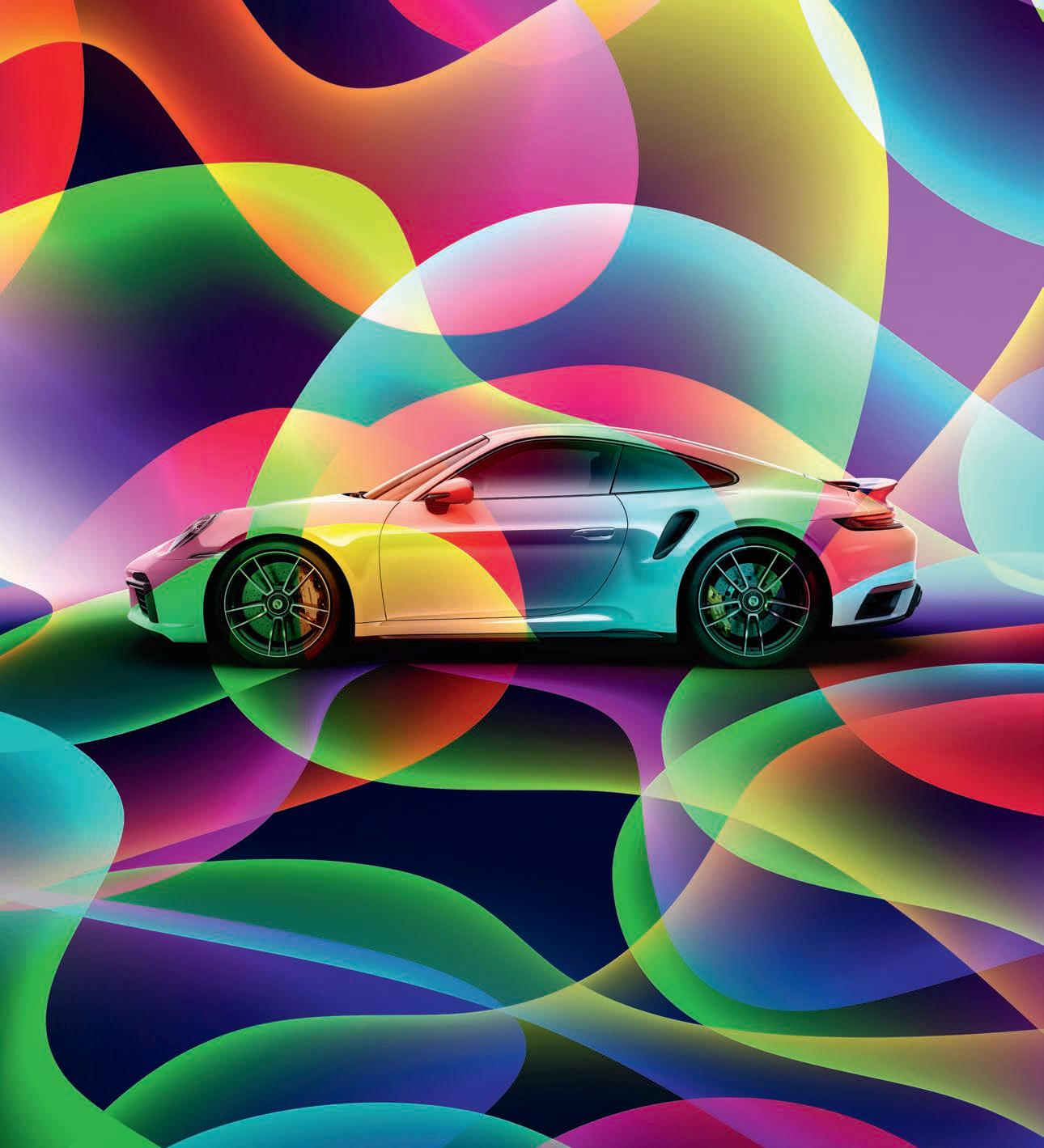
Playwright Jeremy O. Harris is one of the most important literary voices of his generation. He’s also a total riot to share an Uber with
By Paul Flynn Photography by Justin French
Styling by Mobolaji Dawodu


n the back of an Uber, hurtling through the final hours of Paris Fashion Week, the esteemed and disruptive playwright Jeremy O. Harris is reflecting back on his first crowning moment. At the 2021 Tony Awards, Harris’s Broadway debut, Slave Play, was nominated for an unprecedented 12 awards. “Iconic,” he notes. Tony Kushner, the previous recipient of the most Tony nominations for a single play for Angels in America, was the first audience member to lead a standing ovation while Slave Play was still in preview at e New York eatre Workshop. “To get that stamp of approval from one of my idols – one of the people who taught me to write the way I write – was very cool.”
Harris is a forthright, infectious, clever communicator, in life as on stage. He is blessed with usefully clashing characteristics: the resourceful wit of those who came from nothing and the robust confidence of an Ivy League education. Harris was born in Martinsville, Virginia, and educated at Yale. He is at the vanguard of capital ‘B’ Black and capital ‘Q’ Queer thought, injecting a new forcefield of energy and enterprise into New York’s wilfully static, conservative theatre industry. Both facets unlock a corner of his artistry – Harris makes theatre uniquely appealing for those who might not automatically consider themselves “theatre people”. And, as well as his prodigious storytelling gi he is enormously good fun.
Fashion loves Harris. He is the only playwright in living memory to have modelled for Gucci and simultaneously held an editorial title at the Warhol-founded Interview magazine. At the 2021 Tonys, he wore custom couture Schiaparelli by Daniel Roseberry. “ at was supposed to be my f**k-you dress,” he says with a smile. He didn’t expect to win anything. “My chest was exposed. It was a crop-top. I’m wearing a corset. Everything about it was about me being c**ty-c**ty-c**ty-c**ty.” He repeats the ultimate modern New York superlative with the same rhythmic precision Beyoncé uses on her whipsmart Renaissance album track, Pure/Honey “It was about: I look so good that it doesn’t ma er whether I win or lose, because I’m going to be wri en about tomorrow anyway.”
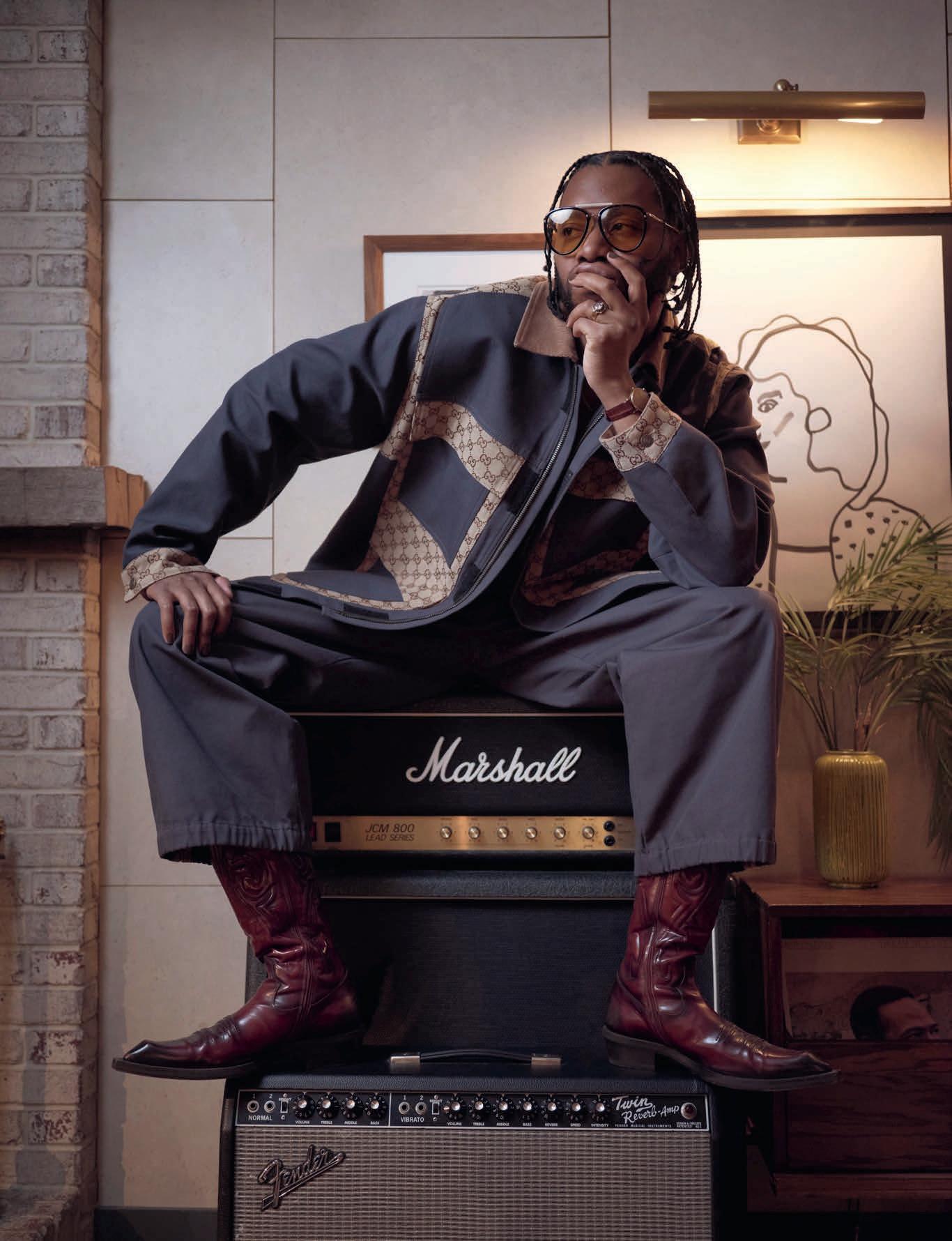
Harris’s dates for the evening were his mum, his high school literature teacher (“who completely redirected my life”) and his then-10-year-old niece. “All the women that inspire me,” he adds. His niece picked a Schiaparelli piece of her own to wear. “How many 10-year-olds get to do that? It was such a nepo baby journey and I loved it.” “Nepo baby” is media shorthand for the (recently maligned) o spring of famous parents, who get a premature leg-up the fame ladder. “Honestly, nepo kids deserve rights too!” By now, Harris is howling laughing. “Like, listen, she didn’t ask to be born into a family with a famous uncle playwright. But it happened.” is is the way conversations with Jeremy O. Harris track. You start on one subject, then he will he will take you on a sharp hairpin bend around an unexpected corner. As with most topics, on the nepo babies brouhaha, Harris is well worth listening to. “It’s a very complicated thing,” he says. “As someone who is class-conscious, it is horrific that classism has a ected our world to the extent that it has. But it’s very easy to hyper-focus on people who are on television or in the media as being the height of all cultural references that capitalism has wrought.” He’s a though ul, circuitous conversationalist. “I don’t know that a kid who’s mum was a playwright or a Downtown artist is necessarily the height of our country’s social ills.” He sighs. “ e people that I’m more anxious about are the people whose families have wealth that is invisible: whose dads are in finance or banking; who have millions and millions of dollars and then have kids who go on to film school or art school and never have to account for the fact that they don’t have to pay rent.”
As a child in Martinsville, Harris was hyper aware of how the class system operates in reverse. “It’s a city where the nicest restaurant is an Applebee’s. Also, once it was a thriving furniture town.” He intends to write about the demolition of his hometown one day. “It was once a significant, thriving furniture town that had some of the best factories in the country. When NAFTA [the North American Free Trade Agreement] happened, all the factories closed down. So, in the 1990s, saw this vibrant working-class community become bere of any culture or finances. Now we have the highest per capita opioid rates of any city in America. at’s just where I’m from.”
In this regard, why shouldn’t his li le niece get to wear Schiaparelli, too? Where there is robust, blunt-talking analysis, there is usually a humorous payo with Harris. “Besides, I’m more interested in the nepo babies who are flops. ere are so many people who had wildly famous mums and dads who you never hear from again a er they do one movie, because they were not talented. I mean, yes, Zoë Kravitz’s parents are famous. But Zoë is stunning. Being that charismatic is not something you’re born with.”
Our conversational rollercoaster backshi s to the night of the Tonys. In the end, Harris’s assumption of Slave Play winning in none of its 12 nominated categories proved correct. He wasn’t concerned. Slave Play was hardly typical Broadway fair. e story of three interracial couples undergoing “Antebellum Sexual Performance erapy” due to the Black partners no longer finding their white partners sexually a ractive was hardly set up to travel across Middle America with the mellifluous commercial ease of Moulin Rouge or Jagged Li le Pill “My play was very much a play that was negging or antagonising the establishment,” he qualifies. “So, I don’t think that you can antagonise the establishment and then say, ‘Oh, but why didn’t they give me an award?’” Harris had a blast that night, regardless. “I told my mom early on, ‘We’re not winning and that’s going to be OK.’ It’s more punk to walk away with


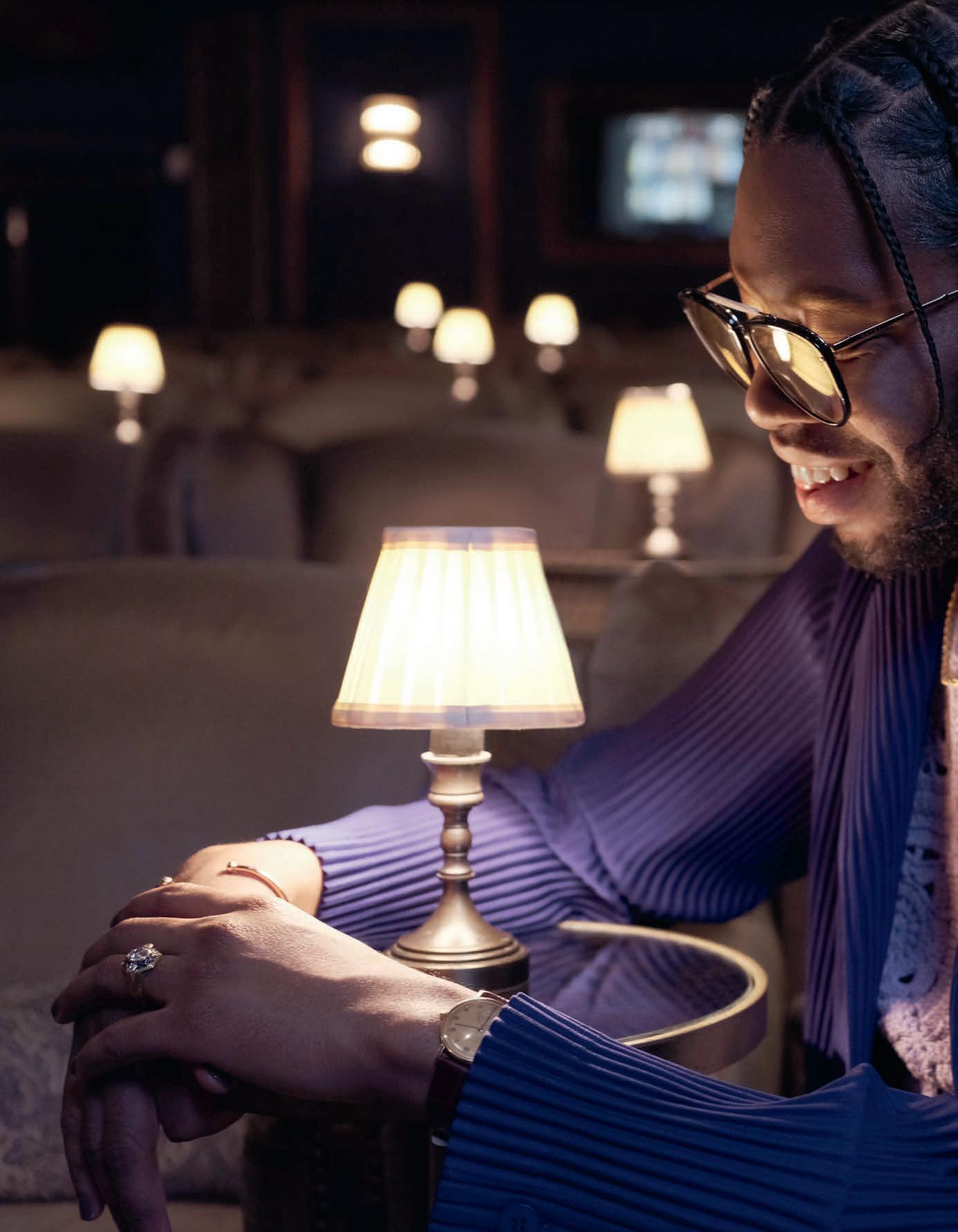
Below: Jacket, £2,450, Gucci. Trousers, approx £998, Nanushka. Shoes and socks, Harris’s own. Below right: Jeremy O. Harris sat front-row at New York Fashion Week, February 2023 pool and cunning use of George Michael’s Father Figure at the end of the first act.
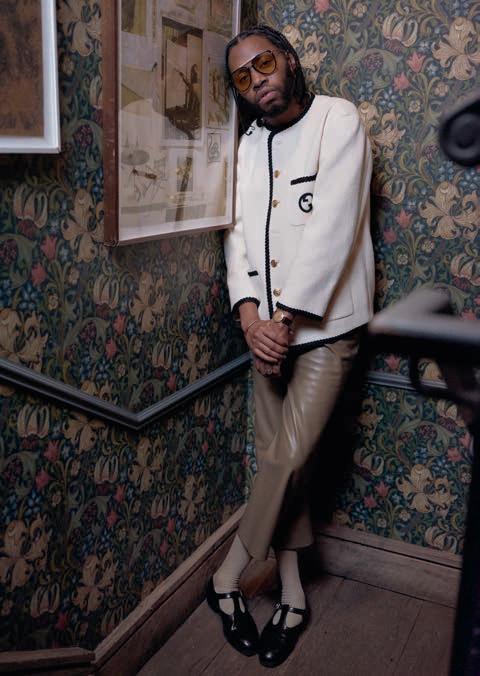
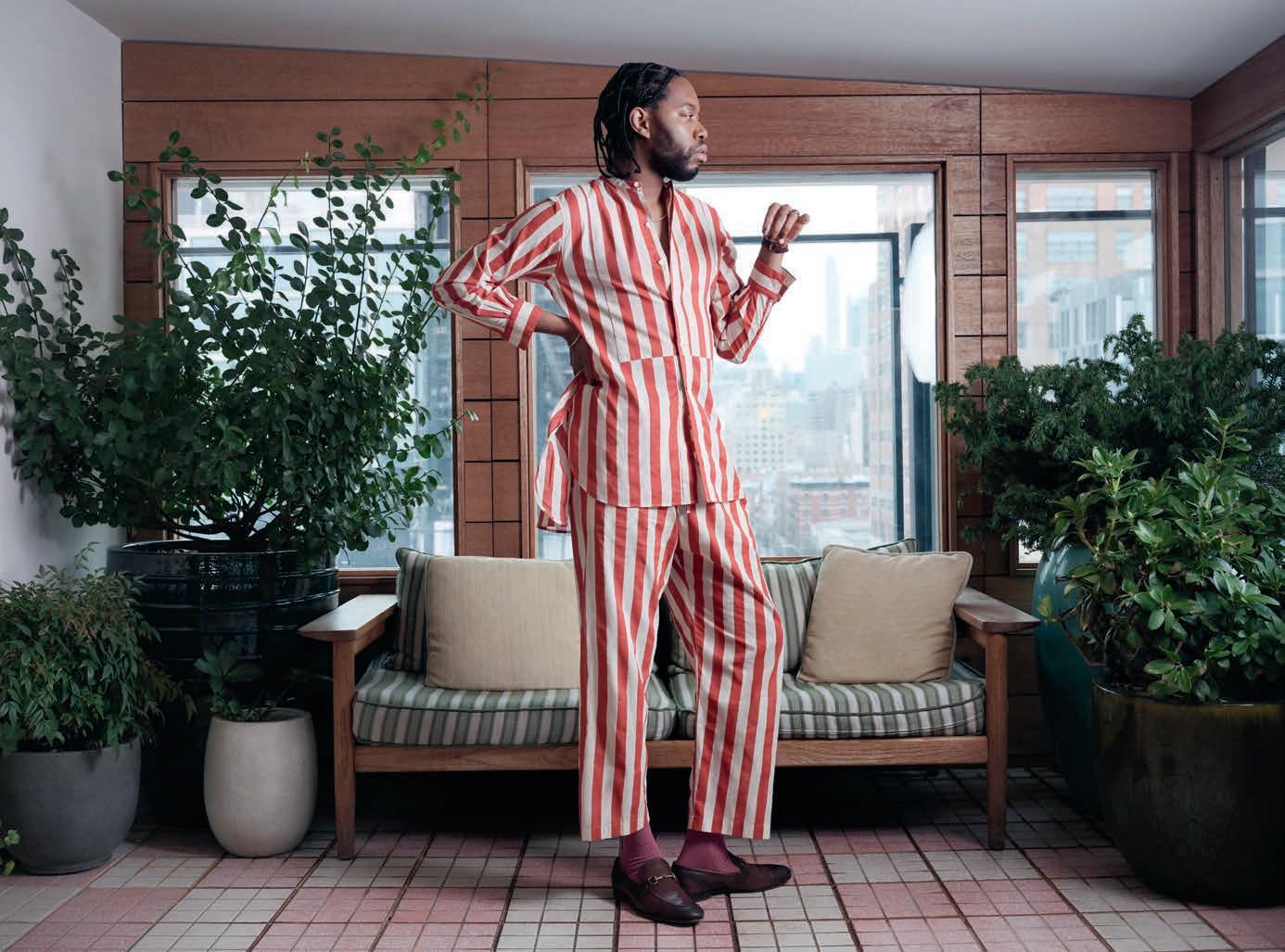
Harris is currently filming a documentary, expected to debut at the film festivals this summer, loosely based around his writing process. e process is throwing up some startling realisations about why he writes fiction. “One of the things I’ve learned is that all of my characters are me,” he says. He’s had the thought in passing before, “but started to feel it deeply now. ere’s something exhilarating about that knowledge. What that teaches me about myself is my unknowable vulnerability. want to keep mining those: like that my unknowable vulnerabilities make people uncomfortable because that discomfort is something that they say silently to themselves; that they don’t want to see or say out loud.”
He says that the content of his documentary is still the subject of some secrecy. suggest that secrecy is not something a gregarious and open-armed communicator like Harris would find naturally comfortable. Quite the contrary, he protests. “I’m quite good at it, actually. You know, I am one of maybe five, 10 people on Earth who knows what’s going to happen in season three of Euphoria.”
Harris has been a consultant on his old friend Sam Levison’s HBO series – a magical address to American youth in the age of opioids – since the beginning. As such, he’s in a unique position to comment on exactly where it went right. “ e magic that, despite what the internet thinks it knows about Sam Levinson, and they think they know a lot, he and his wife Ashley, his production partner Kevin and everyone else involved in the show create a lovely home for people to be their best selves.”
Harris and Levison first met in New York, when they were struggling through their early twenties to get their storytelling voices heard. He points to the crucial casting choices of Euphoria as another example of how the show has become such a lightning rod for contemporary screen culture. “We now know that Zendaya is one of the great actresses of our generation,” he says. “But I think that even I would have questioned, early on in the casting process, whether she would have been able to show the range she has in this series. is is a girl who doesn’t got out to clubs. is is a girl who goes to work and goes home to play with her dog. It’s hard to imagine that actress nothing. Suddenly, I feel like Beyoncé and Renaissance It doesn’t need to win. She’s Beyoncé. It’s way more punk to be Beyoncé and perfect every time and still lose the big award.”
Harris feels like a more natural a endee of the Grammys than the Tonys. His rockstar demeanour is part of what makes him such a breathtaking addition to the storytelling cannon. But don’t let that distract you from the punctiliousness of his theatre methodology. “I’m a child of the underground and the experimental,” he says, “So, I guess in that way I do say, f**k the orthodoxy. But dramaturgically my plays are pre y classic. I’m a structuralist. I’m constantly dissecting and reimagining Aristotelian practises inside my work. ere’s a unity of time and space in Slave Play that I’ve seen very rarely from the type of play that I did. I wanted to make something that felt like a Porsche: it looks really sickening and complex on the outside, but you go on the inside and its very much ready to run fast.” e engine is purring. “Yes, yes, yes.”
Last year, his London debut, a staging of Daddy – the first play he wrote as part of his masters qualification at Yale –wowed audiences that looked more like nightclubbers at an east London queer nightclub than gentrified patrons of the West End, while selling out the Almeida. Daddy untangled the power dynamic of another interracial queer relationship, between Franklin and Andre, with brisk energy, a swimming is able to play a heroin-addicted teenager with the level of complexity she does. Sam saw that early on.”
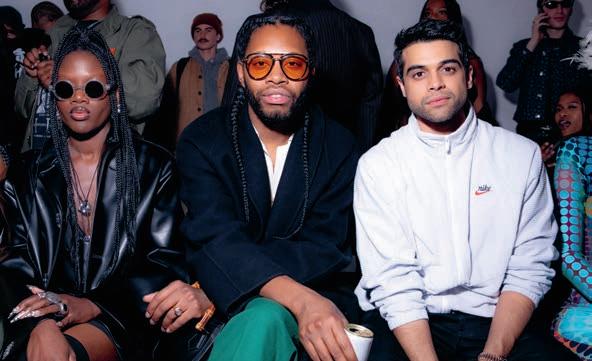
He describes his involvement in the show as “family sh*t. I’ve known Sam since I was 22 years old.” Harris is now in his early thirties. “[Sam had] only made one film that I really liked, called Another Happy Day – which everyone should see, by the way. He was just hanging in New York. He and I would hang out together. would pitch him my ideas and let him read early scripts and he would pitch me his and let me read his early scripts. I trusted him a lot and he trusted me a lot to tell each other the truth about what we were writing. And a lot of that truth was, ‘I f*****g love this.’ at’s really lovely.”
Levison is just a small corner of Harris’s impeccable New York contact book: a generation who came to smash what went before and carve a new aesthetic according to their version of the world. His associated network is now the building blocks for a new New York, post-pandemic. “It’s very kind to say,” he says, unusually demur. “I’m a racted to talented people and I think that like a racts like, you know. I feel very lucky that because I am so social, I’m able to really celebrate and be in a community with some really f*****g talented and outstandingly unique individuals. If I meet you at a dinner and we vibe, I will go to bat for you until the end of time. If you need a place to stay, will open my home to you, much to the chagrin and frustration of my fiancée, who is an only child and does not like our apartment being a hostel for complex communities. But it’s true.”
In this regard, Jeremy O. Harris is playing to a classic rulebook when it comes to becoming one of the literary greats of our time. To become mythological, one must understand how myths are made. “You read Susan Sontag’s journals,” he notes, as his Uber finds its destination. “You read Truman Capote’s diaries; James Baldwin’s diaries. ese are people who stay part of the historical narrative, the cannon, forever, just because they listened deeply and opened their homes to others. Whenever I read about those people, think, I want to be one of those people.”
I always knew wanted to have my own brand one day, but I didn’t plan on launching as soon as I graduated. During my MA, I made a book called Sweet Lassi about the global secondhand clothing industry in India and Nigeria, where I’m from. released the book on the same day as my graduate show, and the combination of the collection and the storytelling made quite a buzz – it got lots of press, kickstarted conversations and a few stores started approaching me straight away with orders. I didn’t even have a logo at that point, so I really had to hit the ground running.
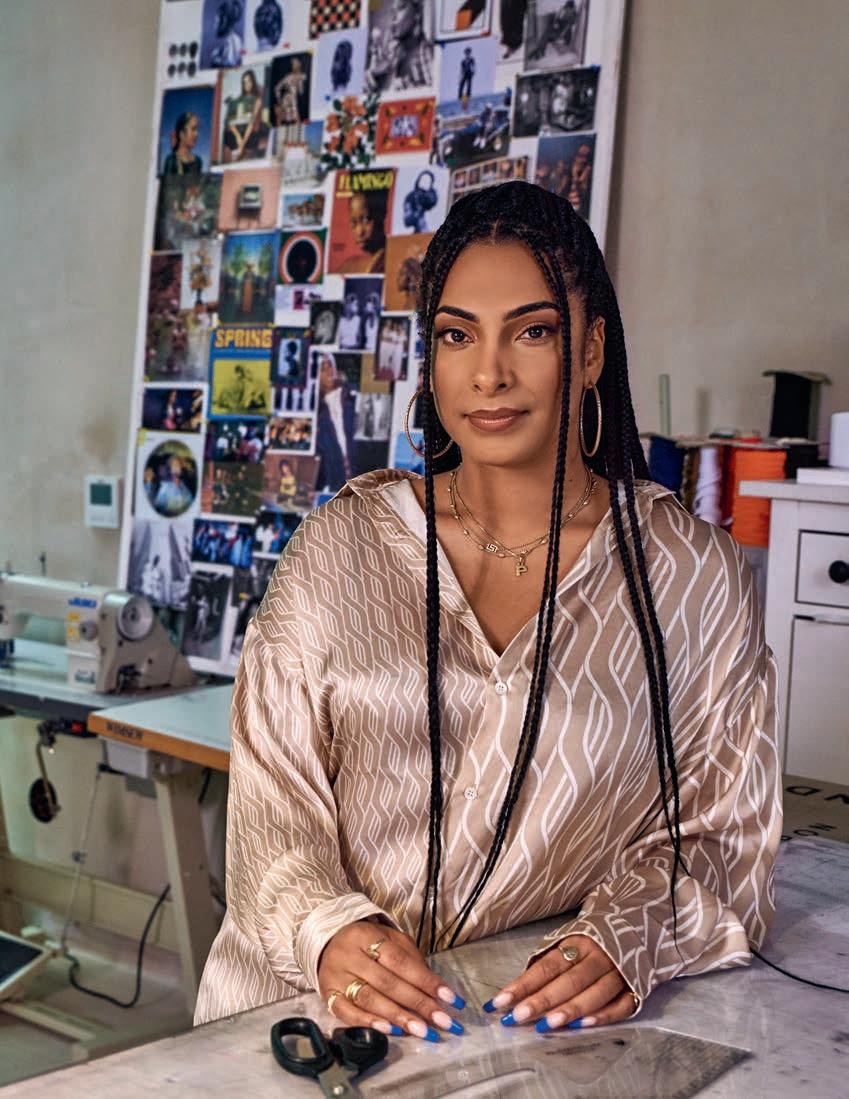
My advice to budding designers is to think editorially. Figure out who you are creatively. Ask yourself: what is it you love? What is it you care about? What is your unique point of view that is different to everyone else? That is key to having a brand that excites people. en, think about everyone you work with – photographers, stylists, make-up artists – who can help shape your vision. Visuals are equally as important as the product.










